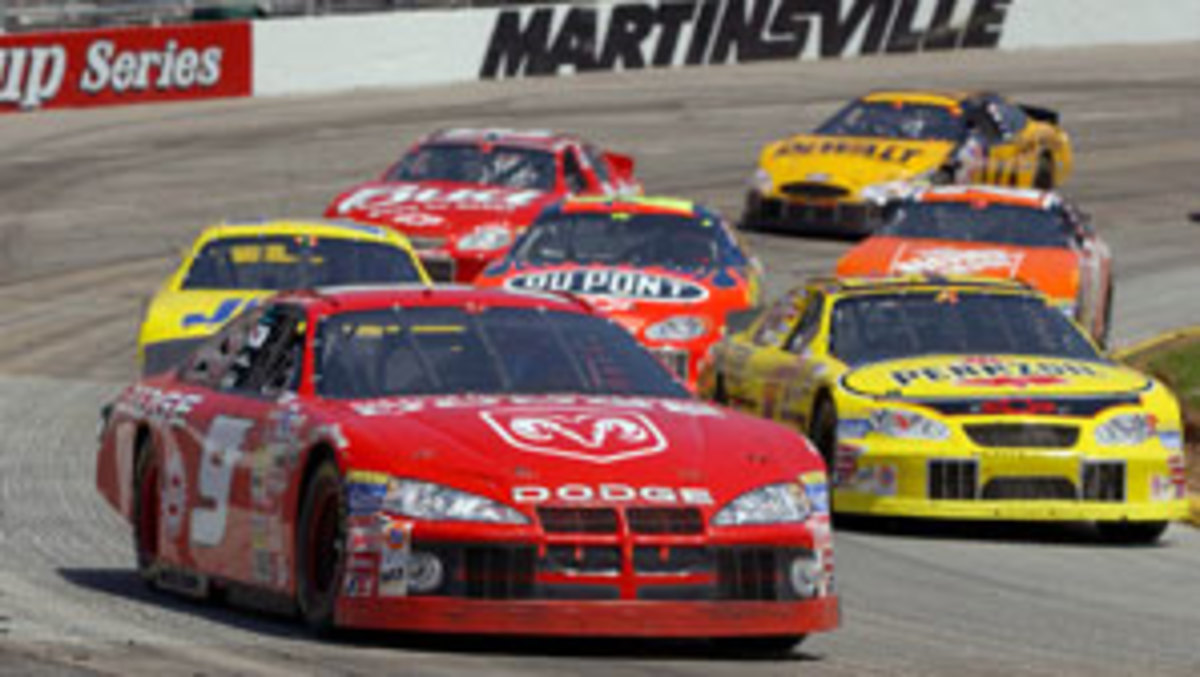
NASCAR faces its own March Madness, sans the Cinderellas
It was those types of underdog vs. favorite matchups that NASCAR once sold to the masses on a weekly basis. But as the series heads to Martinsville this weekend, it's faced with a real-life March Madness all its own.
No longer in this sport can David compete against Goliath. In fact, it's worse: he's not even making it to the finish line.
Martinsville used to be the birthplace of such remarkable stories. NASCAR's oldest speedway is home to 60 years of racing history, serving as the backdrop to some of the sport's most memorable moments. It was here where Richard Petty's famed No. 43 last visited Victory Lane, with John Andretti wheeling it to victory in 1999. The track featured one of the last safehavens for single-car teams to effectively compete, with Ricky Rudd (1998) and Ricky Craven (2001) among the last of this dying breed. Each broke through with hard-fought victories despite having a fraction of the money and employees of the multi-car giants around them.
But as NASCAR changed, so has this speedway that now defines the widening gap between rich and poor. Since the start of the 2003 season, one team -- Hendrick Motorsports -- has won 10 of 14 here, beating its competition into submission at a track where even the humblest team used to compete. Instead, a track in which money and horsepower should matter the least saw all its top 10 spots in both '09 races go to multi-car teams, with the underdogs failing to qualify or simply languishing in the rear.
It's the rule and not the exception for the little guy, finding it near impossible to compete in this era where less than $10 million doesn't even get you a competitive spot on the grid. For awhile sports like college basketball moved toward parity from top to bottom, but NASCAR seems to be headed in the opposite direction.
Just 10 years ago, the Spring race here had 43 cars fielded by 27 owners. Within that group you had a little mix of everything: your Dukes (#1 seeds capable of dominating at every track), your Northern Iowas (a middle-tier team that pulled an upset every now and then), and a single-car team like Robert Morris that would occasionally come out of nowhere to give the top programs a run for their money. The diversity of the programs left most in a position to pin down an impressive finish at least a handful of times a year.
But somewhere along the way these last 10 years, the Northern Iowas of racing went bankrupt while NASCAR's elite started gathering up the scraps. That's led to these startling statistics of an eroding "middle class," a problem becoming more prevalent than ever. Now, multi-car teams dominate:
Four-car operations: 3 (Jack Roush, Rick Hendrick, Richard Petty Motorsports)
Three-car operations: 5 (Richard Childress, Penske, Joe Gibbs Racing, Michael Waltrip/JTG Racing, Front Row Motorsports)
Two-car operations: 3 (Team Red Bull, Stewart-Haas, Earnhardt Ganassi)
That's 33 of the 43 spots on the grid, leaving very little wiggle room for a handful of underdog challengers. Those remaining dozen teams that have attempted every race are largely single car operations, a small group of Davids that act more like duds.
Just one (Regan Smith's No. 78) has cracked the top 15 at any point this season, and half of them have so little funding they resort to a practice called "starting and parking" each week, pulling in before the first pit stop to pocket some cash. It's like Cornell playing the first five minutes against Kentucky before deciding to forfeit, accepting their finish and then going home to hang out. That would be unthinkable in virtually any other professional sport, but in NASCAR the rich guys taking all the money have made it a normal, weekly practice.
The widest gap comes with equipment, where the Davids don't have enough to even buy a slingshot. While teams like Hendrick share a sponsorship pool somewhere in the neighborhood of $60 to $80 million, the bottom-feeders are lucky to even get $2 or $3 million thrown their way annually. That turns into a losing effort for them against these gigantic programs that have outside aid and an army of engineers fine-tuning their cars back at the shop. Not to mention the ridiculous cost of an engine, too. Most rentals can be up to $100,000 for one full race, leaving the underdogs pursuing an ugly practice of renting them at ¼ price -- by only going ¼ distance during the race before parking.
So while the dozen owners at the front of the pack virtually dominate the race in every category, these 10 at the back are simply lucky to be here. Is that sustainable for the sport? After all, what's the drama if a 13, 14, 15 seed never wins? You need an occasional breakthrough to give these teams hope and keep fans honest.
But as of now, they're not getting it. The same drivers winning contributes to a product that's become increasingly generic and predictable. So if NASCAR learns anything from this year's version of the NCAA tournament, it's that the underdog sells -- and NASCAR had better save some of its before it's too late.




